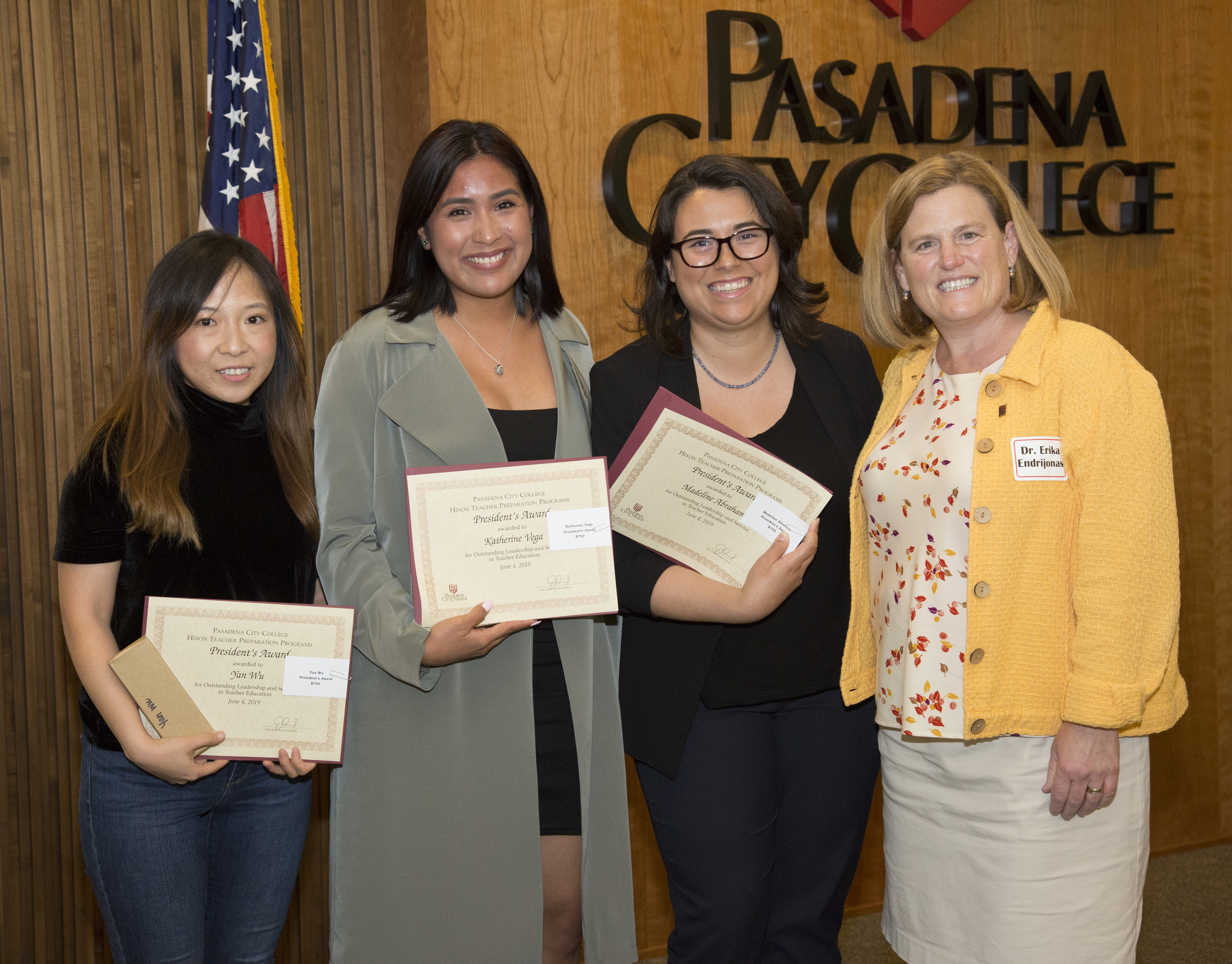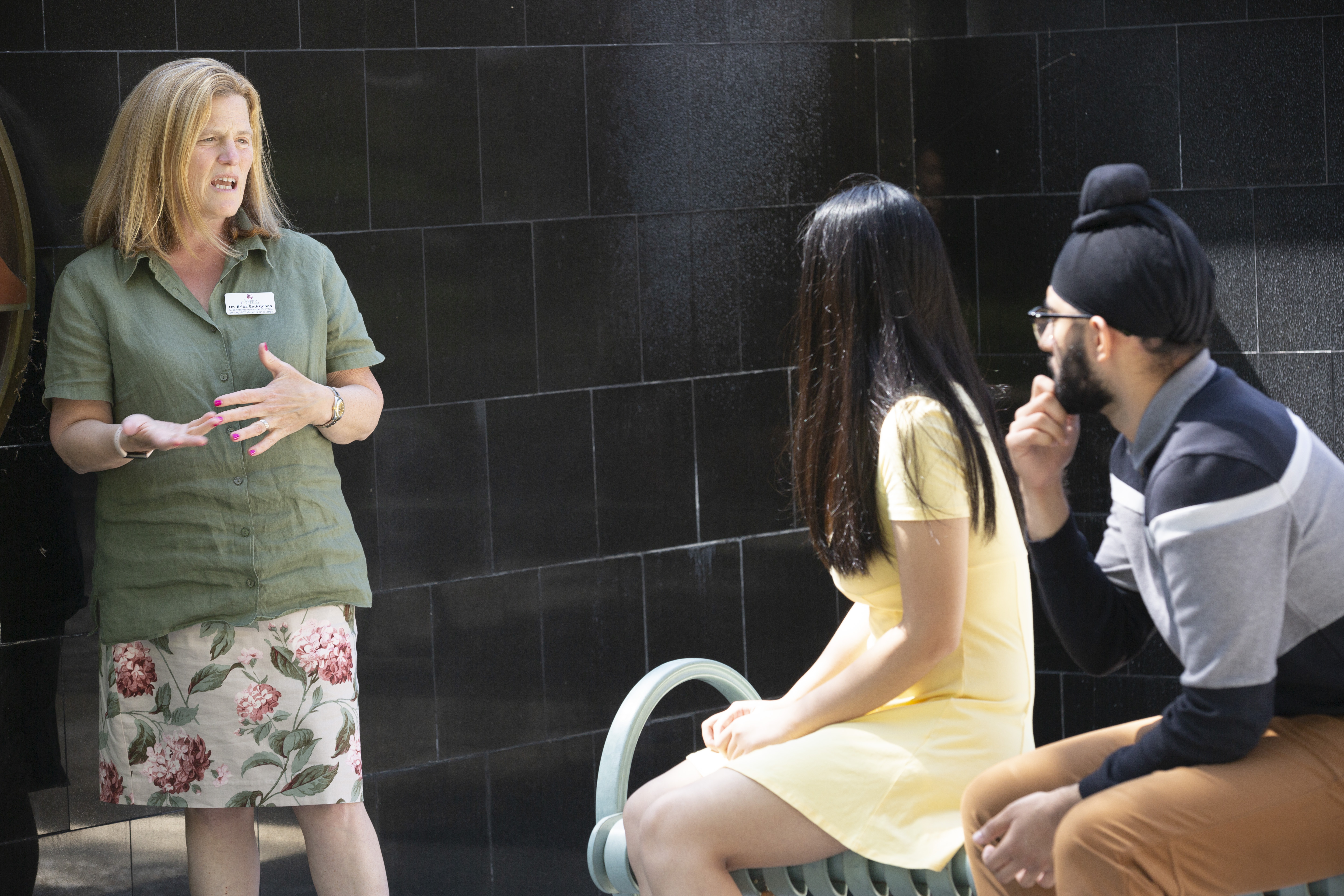Dr. Erika Endrijonas describes herself as a “professional problem solver.”
That’s even after she faced the biggest challenges and problems as president and superintendent of Pasadena City College. Like many, she was caught off guard when the pandemic hit in 2020, a year into her new position at this highly successful community college.
“This is the biggest problem I’ve ever had to solve in my career,” she admits, as she now focuses on rebuilding this single-district community college after the 2020 pandemic lockdown.
“When I arrived at the college, enrollment was close to 30,000, and 24,000 full time equivalent students. We were doing well,” explained Endrijonas. “We were also finalists in the 2019 Aspen Prize for Community College Excellence. Things were really pumping along.”
Initial Challenges
But two days after taking the helm, the superintendent was in for her first surprise. She received word from the state that they didn’t want to pay to retrofit a building after the state had agreed to pay 100 percent before her arrival. Endrijonas went right to work with lobbyists and former college presidents to lobby the legislature and secure at least 80 percent coverage by the state. In addition, she focused much of 2019 on preparing a bond to be submitted in 2020.
“When I got here, they were finishing up their educational masterplan and starting and completing a facilities’ master plan,” she explained. “They were interested in going for a bond in 2020. We completed all the proofs - the board had approved it in March of 2020 - and then because of the pandemic, we didn’t move forward with the bond.”
As was the case with the entire world, all plans ground to a halt. “In March, we got the shelter in place order. Then, between March 12 and 18, we transitioned the entire college to a remote infrastructure,” said Endrijonas. “We were supposed to have a professional development day on March 12, and instead, we focused on the pandemic.”

Imploring Flexibility and Creating New Systems
If there’s one thing that may have prepared the superintendent for these times, it was her own upbringing as an army brat. Born in Germany, Endrijonas also lived in North Carolina, California, Florida, Texas, and Wisconsin, all by the time she was nine. She attended junior high and high school in Los Angeles, followed by undergraduate school at Cal State Northridge and graduate school at the University of Southern California.
“I implored everyone to always be flexible. Perfection was the enemy of the good and I aimed at calming everyone down,” explained the superintendent about her approach to that transition.
“The information was changing by the day. We had to get computers to students and provide emergency aid to them to help with rent. But we transitioned our college to an online platform after not having had many online offerings. We got the first set of the CARES Act dollars to students and dispersed financial aid earlier than planned.”
Within little time, Endrijonas’ full attention was on how to serve her students with their most immediate needs and create new systems and platforms to do so. She adjusted and learned not only how to serve students in the moment, but also how to create more flexible systems that can benefit her community college students in the long haul.
“I think the upside of the pandemic was that it challenged the resistance to online learning that existed before the pandemic. It was a really great way to demonstrate that faculty could teach and that students learn online. It pushed us to see how many student services we could provide online, and to assure we met the needs of all students,” said Endrijonas.

Supporting Diverse In-person, Online and Hybrid Enrollment
Although Endrijonas describes herself as a professional problem solver, the greatest challenge has been bringing everyone back on campus while creating new structures for students to be successful. “The downside was that it became a challenge getting people back after we sent everyone away in 2020. More people became comfortable working remotely—they didn’t have to commute and could have more flexibility—so we lost a sense of community not being face to face. There was angst in coming back together.”
“Now we are trying to figure out how to help people build a level of community both online and in person,” Endrijonas adds. “The fact is that we have a lot of students who are trying to figure out whether to be online or in person. There are others who haven’t come back because they’re making a lot of money in an employment market,” said Endrijonas. “We are doing a lot of targeted marketing. We have a texting program where we reach out to former students. We make phone calls too and are doing everything we can.”
All of these efforts have paid off. Pasadena City College has been able to build up a strong online presence since 2020, in addition to rebuilding its in-person and hybrid enrollment. While the number of enrolled students is down from 2019, as is the case with most schools today, the college maintains its diversity. Based on 2020 data, Latinos make up 48 percent of the college, compared to Asians at 25 percent, Whites at 15 percent and African Americans, 4 percent. In addition, 21 percent of the faculty are Latino, 18 percent are African American, and 54 percent are White. Due to its strong reputation, about 70 percent of the college comes from LA county or outside the district.

Closing Equity Gaps
Since the pandemic lockdown, the superintendent has focused immense attention on closing the equity and achievement gap. And to a certain degree, she turned a negative into a positive. “Flexibility is the future. We can help students design schedules where they do some work online and some in person,” she said. “I have long railed against forcing all students to be full-time. I am not a proponent of that. We are used to having a white culture of college-going students, and this is racist and not possible for many students.”
“We have to stop assuming that the only way to get students through is to force them to be full-time,” she added. “About 35 to 40 percent of our students are parents of kids. We have opened a family resource center on campus to help with this.”
When Endrijonas first arrived at Pasadena City College, she created a goal to close the equity gap at her school by 100 percent by 2017. “Because of the pandemic, we may not have narrowed the gap,” the superintendent admits. “But we have dedicated people doing this and I want to be here to help the college achieve this. It is important we meet the students where they are and help them cross the finish line. Providing direct outreach to our students, texting them, noticing when they haven’t registered for classes, and helping them is key.”
Laser-Focused on Success
In addition to providing these services, the superintendent has begun building a STEM (Science, Technology, Engineering, and Math) center, improving assistance in Math and English, and centralizing tutoring services. The college has also added virtual support centers, social workers for homeless students, and a 24-hour hotline. “If you address these basic needs, you are also going to help students be successful,” she said.
Endrijonas admits that much of what she has been able to build would not be possible without a strong staff and a college that has long held high standards. “This is the fourth college I’ve worked at, and yet I’ve never seen a college so laser-focused on student success,” she said. She has worked as president of Los Angeles Valley College, Executive Vice President and Accreditation Liaison Officer at Oxnard College and Dean of Educational Programs at Santa Barbara City College. “The research capacity we have invested in is huge. We take student data and meet student needs with this. We look at how to make things easier for students and provide good services.”
Supporting the Other
During the pandemic, the college moved the Black Student Success Building and created more services for underrepresented students. In addition, the school has also begun looking for a place where it can have a LatinX student success center.
Although Endrijonas is not Latina, she recognizes the importance of addressing the needs of the Latino population, especially given that they make up almost half of her college population. In addition, she understands the financial challenges and realities for so many first-generation students who juggle education and work.
“I grew up where it was assumed we’d go to college. But the day after I graduated high school, my mom said she would not pay for it and would not fill out financial aid forms. They could have paid,” she explained. “I worked all through college. I had a typewriter and went around the dorm, and I’d exchange food for typing if students didn’t have money.”
“I can’t ever pretend to know another person’s experience from a racial perspective,” the superintendent added. “But as a person who had to pay her way through college and be an out lesbian, I understand what it feels like to be other.”
Latino Programs
In order to support Latinos, Pasadena City College offers a variety of programs. The Puente Program helps students prepare for classes and transfer; it provides mentoring as well as college exposure for Pasadena Latinos seeking to transfer to a University of California campus.
Since 2001, Pasadena has also offered the Pathways First Year Experience (FYE), which attracts many Latino students. Over the years, the program has expanded to include summer orientation programs, a first-year seminar; success coaches, and graduate students who serve as the first point of contact for students. Students are offered academic support and access to a center, dedicated counselors, tutors, and computers. Those who complete the program’s courses and a student success plan also receive second-tier priority registration.
“We have student services with academic advising and every student has a success coach,” said Endrijonas. “Last year, we had 6,000 students in our orientation program.”
In October 2019, PCC was awarded the HSI Title V grant “Abriendo Caminos: Opening Pathways to Institutionalize Equity.” In addition, the college hosted its first Festival LATINX this past Spring. This cultural festival, aimed at recruiting and providing resources to potential Latino students and families, attracted over 2,500 people. It was filmed by Telemundo and included a soccer game against Guadalajara players, food, games, and multiple activities.
“The energy on our campus was amazing,” said Endrijonas. “We really wanted to do outreach to the Latinx community and let them know that we want to serve them.”
Students First
With Pasadena City College returning to some sense of normalcy, the superintendent was hoping that her school’s recent 565 million facilities master plan bond on the November ballot would receive voters’ support. In addition, she’s looking forward to 2024, when Pasadena College celebrates its 100th birthday.
No matter what challenges or successes Endrijonas has faced, she maintains a strong focus on closing the equity and achievement gaps at her college. After all, her students come first.